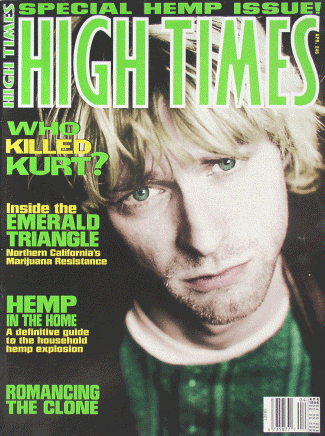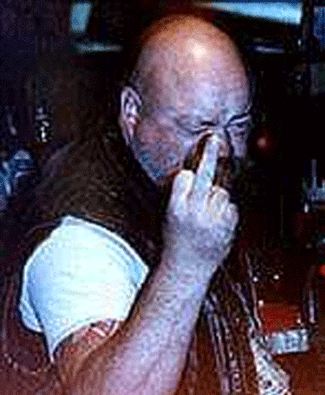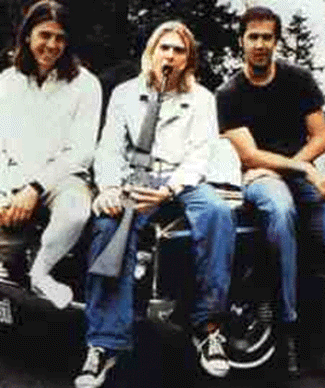by Poppy Z. Brite
Copyright © 1997 by Poppy Z. Brite
NOTICE: THIS WORK MAY BE PROTECTED BY COPYRIGHT
YOU ARE REQUIRED TO READ THE COPYRIGHT NOTICE AT THIS LINK BEFORE YOU READ THE FOLLOWING WORK, THAT IS AVAILABLE SOLELY FOR PRIVATE STUDY, SCHOLARSHIP OR RESEARCH PURSUANT TO 17 U.S.C. SECTION 107 AND 108. IN THE EVENT THAT THE LIBRARY DETERMINES THAT UNLAWFUL COPYING OF THIS WORK HAS OCCURRED, THE LIBRARY HAS THE RIGHT TO BLOCK THE I.P. ADDRESS AT WHICH THE UNLAWFUL COPYING APPEARED TO HAVE OCCURRED. THANK YOU FOR RESPECTING THE RIGHTS OF COPYRIGHT OWNERS.
Chapter 1
It was autumn in San Francisco, the season of the witch, 1964. Somebody in the Haight was giving a party for jazz legend Dizzy Gillespie, and Hank Harrison was invited. Hank believed himself to have a standing invitation to any party in San Francisco, whether anyone had actually invited him or not; his music connections got him in everywhere.
Hank was going places. His old college buddy Phil Lesh played bass with a hot band called the Warlocks, and Hank was always bragging that Phil could get him a gig in the music business anytime. He would later claim to have managed the Warlocks, who in 1965 would change their name to the Grateful Dead.
Heavy-set and round-faced, with a humped nose, a scruffy black mustache, and a hairline that was beginning to recede, Hank was nobody's pretty boy. But he was a loquacious charmer. His gift of gab and his music connections got him plenty of girls, and that night at Dizzy Gillespie's party, they got him Linda Risi.
Linda was a naive rich girl on her own for the first time. A San Francisco native, she had grown up on ritzy Nob Hill and gone to Catholic school. Now she was nineteen and adrift in the city, swayed by the burgeoning vibes of the sixties. Blonde and slender, neat and WASPish, she didn't blend into the Haight-Ashbury crowd. That was why she caught Hank's attention.
The adopted daughter of an optician (and an heiress to the Bausch optical fortune), raised in the Catholic church, Linda had come to San Francisco upon reaching her majority. Like so many other young people in that city, in that year, she was looking for something she couldn't identify or explain. She didn't find it in Hank Harrison, but for a while she thought she had. They left the party together that night, and staggered up and down the steep sidewalks of the magically lit, carnival-like Haight until they reached Hank's dingy apartment.
Linda was already pregnant when she married Hank in Reno a few months after they met. Hank kept feeding her a line about how the combination of their genes -- his brains and her looks -- would produce the perfect child. Linda had no way of knowing that half of Hank's genes came from a violently alcoholic father, and, being adopted, she knew nothing about her own genes. (Linda would later allegedly discover that her biological father had been a psychiatrist from New York, and his father had been a Jewish psychoanalyst from Vienna, but since she was a well known therapist herself by the time of this "discovery," it must be taken with a grain of salt.)
Hank has since claimed that Linda refused to use birth control because of her religious beliefs. Whatever the case, Linda could not have given up the baby even if Hank had wanted her to. Her own adoptive father had been an abusive drunk, and Linda considered herself an outcast, a person with no family at all. This baby would be the first blood relative she had ever known.
Linda Harrison nurtured her fetus in a heady broth of fear and sugar: she constantly craved candy, cookies, any kind of sweets. She gained weight, vomited all the time, felt that pregnancy had made her hideously ugly. Hank, already getting bored with the relationship, did nothing to allay her fears.
At 9:15 A.M. on July 9, 1965, at St. Francis Memorial Hospital, Linda gave birth to a daughter whose birth certificate read Love Michelle Harrison. The labor had been long and wrenchingly painful. Linda tried to imagine what her baby must have felt, expelled from the cradling womb, constricted for hours in the tight tube of muscle. She imagined that the child had been frightened and furious, and had taken out every ounce of it on her.
Hank was not in attendance at the birth. Sleeping late after a Warlocks gig, possibly. Who knew? But Linda and the other freaks made an occasion of the birth anyway: Courtney would later claim that they had stewed Linda's placenta with onions and eaten it.
Linda, now twenty, adored her daughter helplessly. She had no idea how to care for a baby, though she was sure she had the good "instincts" of every hippie mama. That hungry pink mouth tugging on her heavy breasts, those fierce eyes staring up at her with disquieting awareness -- these quickly became the most important things in Linda's life. No child ever had a needier mother, and the baby must have sensed the chasm of Linda's emotional dependence.
Even then, though, Linda's feelings toward her daughter were ambivalent. Love Michelle didn't always act like a normal baby. She did frightening things: stiffened and screamed upon being cuddled; cried until she all but passed out from lack of oxygen. A photograph taken of the Harrison family at Christmas 1965 shows Linda sitting stiffly with a strained smile on her pretty face, legs crossed at the knee, ignoring the arm Hank has draped around her shoulders; she is distinctly looking away from the baby and does not appear to be touching her. The baby has a lost look, and her hands are reaching toward Linda.
The Harrisons lived in a big Victorian house that Linda's parents had paid for. As well as supporting Hank, Linda often cooked for a ragtag assortment of musicians, groupies, and street urchins. The baby grew up in a fantasy world partly of her own design, partly sketched in by the freaks and artists around her. None of these happy hippie dreamers, though, suspected how dark the child's own inner world was. The earliest dreams she remembered were nightmares of skeletal wraiths, deformed internal organs, poisoned milk (the latter a motif that would recur in her poetry and her later songwriting).
Meanwhile, the people around her wanted her to "act like a flower," to "dance like springtime." She was encouraged to stretch her imagination, and occasionally was helped along with a bit too much zeal. When she was four years old, she has said, her father gave her LSD. (She has no memory of this, but later, during the Harrisons' divorce, Linda and one of Hank's girlfriends would testify that it was so in child-custody court.)
The effects of LSD on a four-year-old are difficult to speculate upon. LSD is best known for causing hallucinations, which may have been especially frightening to an already disturbed child. But LSD also causes introspection and heady flights of imagination. How different would the experience have seemed from her usual highly subjective reality? Did she have a bad trip, and what would a four-year-old's bad trip be like? Did she tap into some well of preconsciousness that adults could never hope to access? Did she even notice?
She has said that her father was involved in the manufacture and sale of LSD in those days, and that he may have supplied the Dead. If so, his acid was probably clean and pure. Though the experience can be psychologically damaging, LSD itself causes no physical harm to the brain or body. Perhaps she just saw colors and pretty lights; perhaps it was even a temporary escape from the confusion of her everyday life.
Although everything was supposed to be peace and love, her parents fought all the time and her father scared her. She was glad when Linda told her that Hank would be moving out for good.
Linda and Hank divorced in 1970, and both sued for custody of their daughter. In the ensuing trial, the charges of Hank's having dosed the child were brought out, and custody was awarded to Linda, who promptly changed her five-year-old daughter's first name to Courtney after a woman she'd known during her pregnancy. "Love" apparently no longer applied to the product of her union with Hank.
Soon after the divorce, Hank disappeared with a Deadhead girl and Linda married again. Love's father had been horrible, but it looked as if Courtney's stepfather might be a nice man.
Frank Rodriguez was a schoolteacher from Portland, and the organizer of that city's Kite Day. He talked to Courtney like a real adult talking to a real child, not in the unfiltered hippie psychobabble she was used to hearing. He also legally adopted her and gave her his surname. Frank was the first (and possibly the only) benevolent authority figure in her life. Tellingly, she began calling him "Daddy" as soon as he and Linda were married, and Hank became "BioDad."
"Courtney was a wonderful child," Frank told Premiere years later. "She had a strong will. There were things she didn't want to do. I wanted her to dress in saddle shoes. But she hated them. She wanted Mary Janes. We went round and round about that kind of stuff. Boy, she sure has gotten them now."
The Rodriguez family relocated to Eugene, Oregon, where Linda started attending psychology classes at the university. Soon she had decided psychological work was her true calling, and the entire family underwent therapy at her behest.
Linda and Frank had two daughters together, Jaimee and Nicole. With other children around, even babies, Courtney felt like the outcast again. Her behavior became increasingly moody, even violent. She made disturbing crayon drawings of terrible things happening to her baby half sisters. Linda apparently became resentful because coping with Courtney's problems began to encroach on her time with her two younger daughters. Linda and Frank were having problems, too. They both began seeing other people, and the marriage split up. Though Courtney would keep in touch with Frank, and her own daughter would eventually call him Grandpa, she must have felt that she was losing the only father she'd ever known.
He was soon replaced by David Menely, a sportswriter and outdoor-expedition leader Linda met on a river-rafting trip. She brought him home, married him, and asked him to adopt her daughters, giving Courtney her third surname in eight years.
David was not as nice as Frank. He had a cynical wit that Courtney admired -- something she recognized in herself -- but he could be vicious. He smoked pot constantly, but it didn't seem to mellow his acerbic personality any, and Courtney associated the smell of pot smoke with BioDad.
In 1973, the Menelys moved from Eugene to a nearby commune in Marcola, where they lived in what Courtney later described as a "tepee." It was a large hut with rough-hewn timbers and a packed-earth floor, full of smoke and shared by many other people. The commune discouraged gender "stereotyping," and Courtney was no longer allowed to wear girly clothes or play with dolls, not that she'd ever had many of either. As she had been in the San Francisco house, she was exhorted by the hippies around her to express herself and be creative.
But the commune's facilities were worse than primitive. Courtney still talks about how the kids at her school called her "Pee Girl" because no one ever thought to wash her clothes. The photograph on the back of her second album, Live Through This, dates from this period. It shows a little girl standing barefoot on a gravel road, her skin shockingly pale, her long hair golden-brown and stringy. Her plaid shirt is too large, and unbuttoned farther than might be considered appropriate for, say, a school picture. Her expression is indecipherable.
In school, Courtney had always performed poorly despite her obvious level of intelligence. Most of the other children shied away from her, and she from them. She was diagnosed by one of her therapists as mildly autistic. To Linda, Courtney seemed to be in pain most of the time: hating to be touched, seething with silent rages, withdrawing into a world where no one else could go. Linda knew something was wrong with her oldest daughter, but no one could tell her exactly what.
Now a well-known therapist, Linda recently broke her longstanding silence about her famous daughter to speak to Vanity Fair. "I think that Courtney came with a tremendous sense of pain in her," she told writer Kevin Sessums in 1995. "She's not any different than she was when she was two years old...yet there were times, even as a small child, she would be really, deeply touched by something. And when that would happen, it was as though every part of her went soft for a little while -- including her heart.
"When she was in the second grade in Eugene, Oregon, she was having a lot of nightmares. I had no idea what to do. I took her to a psychiatrist just to try to find some way to bring her some solace. The psychiatrist said part of the problem with her was that she needed to join Girl Scouts. She needed to be involved in ordinary kid activities. I dutifully went to a Brownies meeting with her...I could tell it was really hard for her to be in the same room with all these kids. The Brownies leader suggested they have an art show. She asked all the kids to draw something. The things that Courtney drew were always startling. She didn't draw sunsets and apple trees. She would draw sort of...wounded figures. I can still see her that day -- her little face so intense with those crayons. At the end of that, the teacher told the troop that they were going to see what drawing they liked the most by holding them up one by one and everyone applauding. I knew that this would be terrible for her. When it got to hers, she just grabbed it and ran over to me, and we left.
"At that time, when a child was exhibiting the kind of pain Courtney was exhibiting -- a lot of nightmares and a lot of crying and hating school and hating everything -- the treatment was pretty much to try and make that child what they called 'normalized' rather than saying, 'What kind of creature is this, and how can we make her be okay with who she is?' That whole belief system was really awful for her."
Courtney's old friend Robin Bradbury offers a different perspective. "I don't know how much of it is true, but she told me stuff like they thought she was a bad influence on her sisters, so they would make her sleep in the shed, and they tried to have her put in a psychiatric place and they did some tests on her and found out that she had a genius IQ, but they [Linda and David] were trying to say she was crazy and keep her away from her sisters...She was a little kid, for God's sake. I just don't think they had time for her."
Courtney tells of auditioning for a school production of Snow White around this same time, certain that she was destined to play the lead. "I studied the part of Snow White forever and had it down," she recalls. "And they gave me, without even auditioning me, the part of the Evil Witch." It was clear that school was never going to be a happy experience for her.
When Courtney was eight, Linda and David Menely made the surprising decision to move to New Zealand and start a sheep ranch with Linda's Bausch money. It would be a fresh, uncluttered life, Linda thought. She and Courtney had begun to have hysterical fights about trivial matters, fights that sometimes made Linda feel younger and weaker than her own daughter. In keeping with her new, uncluttered life, she arranged to leave Courtney with a therapist friend back in the States.
Courtney escaped this abandonment by dreaming of fame, of a time when people would cry and swoon in her very presence. One day she made a clay model of herself and contemplated it with something approaching awe: she had absolute control over this thing, this icon of herself. But control was only a fantasy; in real life she had no say in where she lived, with whom she lived, or even how she was treated. She could mold and crush the clay doll just as the adults in her life could do to her.
School had become an active source of terror. Courtney dreamed about keeping tiny people in jars and starving them, about starting a farm for women where she would beat them and make them beautiful. She sneaked Dorals from the therapist friend's purse and invented witchy little rituals in her room. The friend had a son who called Courtney ugly and fat, then tried to do other things when no one was looking -- grabbing at her, touching her with dirty fingers. Courtney sneaked into his bedroom one day, pricked her finger with a pin, and dabbed blood on his pillow. Soon afterward, the friend dispatched Courtney to her family in Nelson, New Zealand, on the north end of the southern island.
Even there, Courtney was too much trouble. Though Jaimee and Nicole were living with them on the ranch, Linda and David sent Courtney to stay with another friend. Shirley, though, was nothing like the therapist friend with the beastly son. She was a self-proclaimed spinster with a wonderful collection of books and a garden, and she acted as if she didn't mind having Courtney around, maybe even loved her a little. School in New Zealand wasn't as bad as it had been in the States. For the first time she could remember, Courtney let herself believe that her short, sad life was getting better.
But Linda came for a visit and everything went back to hell. Shirley, Linda claimed, had begged her to take Courtney away. Courtney was driving Shirley "crazy" and she "couldn't handle it." Courtney had no idea what she might have done to make Shirley so mad.
Was there any truth to Linda's claim? Shirley was a person who valued her privacy; she might well have found the sudden responsibility of caring for a young child overwhelming. Then again, Linda may have been jealous of her daughter's relationship with Shirley, which was obviously more important to Courtney than her relationship with Linda.
Whatever the reason, Courtney had to go live on the sheep farm with Linda and David. By this time they had adopted an emotionally disturbed boy. Courtney was not allowed to play with her siblings, and was forced to sleep alone in a tiny hut behind the main house. Courtney spent much of her time sitting in the pasture, daydreaming about being a witch, making little slits in her skin with sharp blades of grass until the blood ran down her inner arms.
Linda and David had a son. Courtney found the baby ugly, and thought he had a mean look. When her half brother got sick and died in the hospital before ever coming home, Courtney was afraid she would get blamed for the death somehow. Still, she couldn't help wishing all Linda's babies had died -- all except her. Then Linda would have to love her.
"I feel like not being here all the time," Courtney told author Amy Raphael in 1994. "I've felt it since I was six or seven. I remember the first time it hit me. I was on a cliff in New Zealand. But I never do anything about it because it's my responsibility not to. If I don't outgrow it in this lifetime, I'm not ever gonna outgrow it."
She had a long, long way to go.





